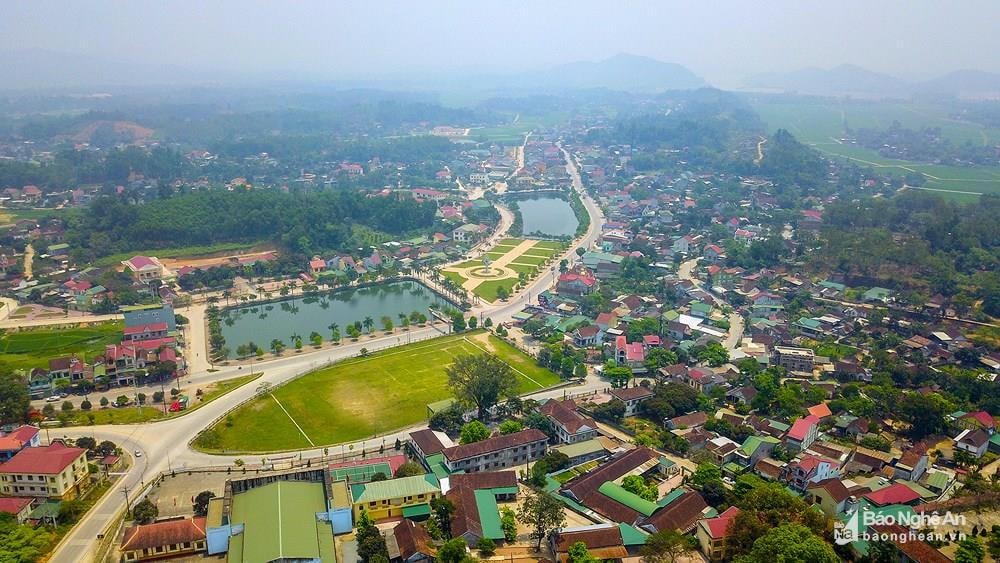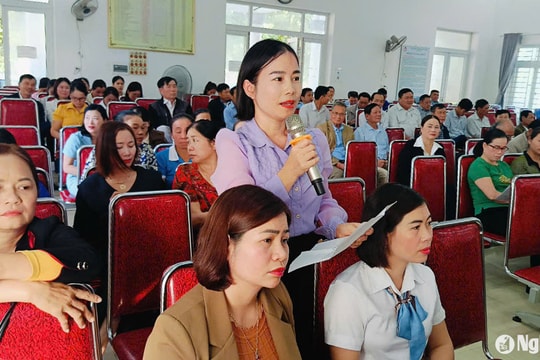Nghe An plans to merge 3,015 hamlets in 14 districts and towns, and 12 districts and towns have proposed to change hamlet names.
(Baonghean.vn) - This is the number of merged hamlets in 14/21 districts, cities and towns of Nghe An that have completed the merger steps according to regulations. The information was announced by the Department of Home Affairs when submitting the draft Resolution on merging and renaming hamlets and blocks (hamlets) in communes in Nghe An province.
 |
| On the afternoon of June 10, the Provincial People's Committee held a meeting to listen to and give opinions on the contents of the 9th Session of the 17th Provincial People's Council. Comrade Thai Thanh Quy - Alternate Member of the Party Central Committee, Deputy Secretary of the Provincial Party Committee, Chairman of the Provincial People's Committee and Vice Chairmen of the Provincial People's Committee chaired the meeting. Also attending were leaders of departments, branches, and committees of the Provincial People's Council. Photo: Thanh Duy |
Currently, the whole province has 14/21 districts and towns that have completed the steps to merge hamlets and submitted documents to the Department of Home Affairs, including: Do Luong, Quy Chau, Yen Thanh, Thanh Chuong, Con Cuong, Nghia Dan, Hung Nguyen, Que Phong, Quynh Luu, Tan Ky, Dien Chau, Nam Dan and the towns: Cua Lo, Thai Hoa.
Through synthesis, the current status of 14 districts and towns has 4,050 hamlets, of which in terms of population size compared to the criteria, 262 hamlets reach 100%; 1,943 hamlets from 50% to less than 100% and 1,845 hamlets below 50% must be merged.
According to the merger plan, in these 14 localities, a total of 3,015 hamlets will be merged, of which 1,289 hamlets will be over 50% and 1,726 hamlets will be under 50% compared to the criteria on population size.
 |
| Mr. Dau Van Thanh - Director of the Department of Home Affairs presented the draft resolution. Photo: Thanh Duy |
The number of hamlets formed after the merger is 1,406 hamlets, of which 876 hamlets reach 100%, 522 hamlets reach over 50%, and 8 hamlets are below 50% of the population size.
Thus, in these 14 localities, 1,609 hamlets will be reduced after the merger and 2,441 hamlets will remain.
Through the synthesis of results, 12 districts and towns proposed to change the hamlet names, including: Do Luong has 8 hamlets; Quy Chau has 5 hamlets; Cua Lo town has 3 hamlets; Yen Thanh has 29 hamlets; Thanh Chuong district has 7 hamlets; Nghia Dan has 17 hamlets; Hung Nguyen has 9 hamlets; Quynh Luu has 19 hamlets; Tan Ky has 1 hamlet; Thai Hoa has 1 hamlet; Dien Chau has 18 hamlets; Nam Dan has 10 hamlets.
At the meeting, the People's Committee approved a draft resolution to submit to the Provincial People's Council for consideration and approval at the upcoming session.
The whole province currently has 21 districts, cities and towns with 5,884 hamlets, the remaining 7 district-level units are: Vinh City, Nghi Loc, Ky Son, Tuong Duong, Anh Son, Quy Hop and Hoang Mai town. When completing the steps according to the process, they will submit to the Department of Home Affairs and the Provincial People's Committee for comments in the coming time before submitting to the Provincial People's Council.
 |
| Thanh Chuong is one of 14 localities that have completed the hamlet merger plan. Photo: Sach Nguyen |
Based on the provisions of Circular No. 14/2018/TT - BNV dated December 3, 2018 of the Ministry of Home Affairs on the organization and operation of villages and residential groups, the Provincial People's Committee has assigned the Department of Home Affairs to preside over and advise on coordination with localities in the province to implement according to the following principles, conditions and specific factors:
- Household size: Hamlets and villages in communes have 250 households or more; Blocks in wards and towns have 300 households or more; Villages and villages in border communes have 100 households or more.
- For villages and residential groups with the number of households being less than 50% of the total number of households, they must merge with the adjacent village or residential group;
- For villages and residential groups with 50% or more of the number of households in eligible places, mergers will be carried out;
- Merging villages and residential groups must be approved by more than 50% of voters or voters representing households of each merging village or residential group.
- In the process of merging villages and residential groups, it is necessary to consider specific factors regarding geographical location, terrain and customs of the local community.


